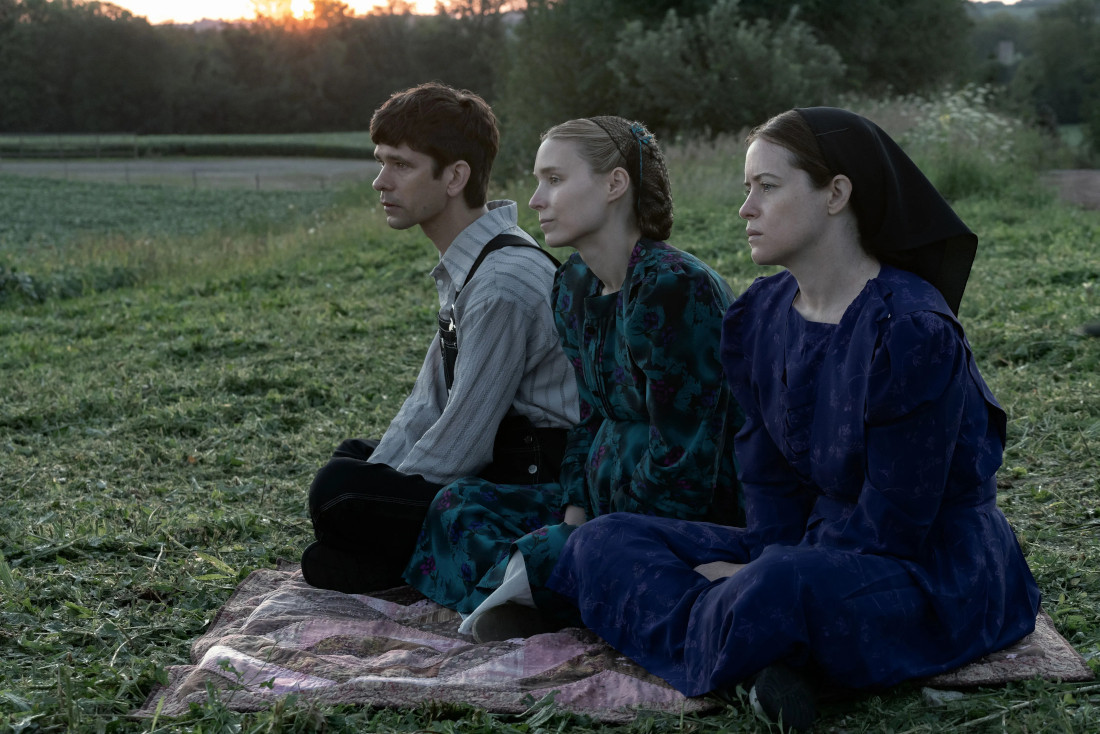Women talking about women talking
A critical look at the film adaption of Miriam Toews’ novel
Do nothing, stay and fight, or leave?
The cinematic adaptation of one of Manitoba’s most celebrated novelists has hit the big screens. Sarah Polley’s directorial take on Miriam Toews’ Women Talking depicts a tale of women’s liberation in an insular Mennonite colony in Latin America.
The fictional story depicts the abuse and sexual assaults that took place between 2005 to 2009 on the Manitoba Mennonite colony in Bolivia. Toews, a Steinbach native, describes the fictitious work as “an act of female imagination.” The film has received widespread critical acclaim and is currently nominated for two Academy Awards, including Best Picture.
In the film Women Talking, set diversity is sparse. Most of the time, the women are gathered in a dark hayloft, engaging in a debate about their uncertain futures. They cannot read. They cannot write. But through every word, they develop a clearer image of what their liberation may look like.
Margaret Steffler, an English professor at Trent University who has studied Toews’ work extensively, believes this adds to the film’s artistic and thematic character.
“Even though the hayloft is a very enclosed space, there is this real expanse of time and place and discussion that is at odds with the sort of physical way in which the women are very limited in where they can go and what they can do,” Steffler says.
“But they can think, and they can laugh, and they can talk. That is a way to expand the limitations of the physical space and situation.”
The film and novel have received critical responses on the depiction of colony life and historical accuracy. Aileen Friesen, an associate professor of Mennonite studies at the University of Winnipeg, says audiences should be cautious about making sweeping generalizations. It is, after all, a work of fiction, rather than history.
“From the perspective of someone who studies Mennonite history, it’s a little bit complicated. On the one hand, I appreciate the attempt to give voice to women in the communities,” Friesen says.
“But on the other hand, Miriam Toews is writing about a community she doesn’t understand. There’s been a tendency on the part of Mennonites in North America to view these colonies in a very black-andwhite way and not to allow the nuance of this way of life to come through.”
Still, the themes present in the film extend beyond the historical and theological context, Friesen says.
“It has been appreciated that the film doesn’t necessarily focus on the Mennonite aspect of the story, that it focuses more on the universal elements,” Friesen says.
“What does it mean to live in a community? What does it mean to have this type of trauma take place in this community? How did communities who are infused with religious values understand this? How do they work through it?” Steffler concurs.
“As a viewer, we’re interested, obviously, in that culture and in that community that is, for most of us, so different from our own experience,” Steffler says. “But that makes the universality of patriarchy and oppression all the more relevant.”
Published in Volume 77, Number 18 of The Uniter (February 9, 2023)








